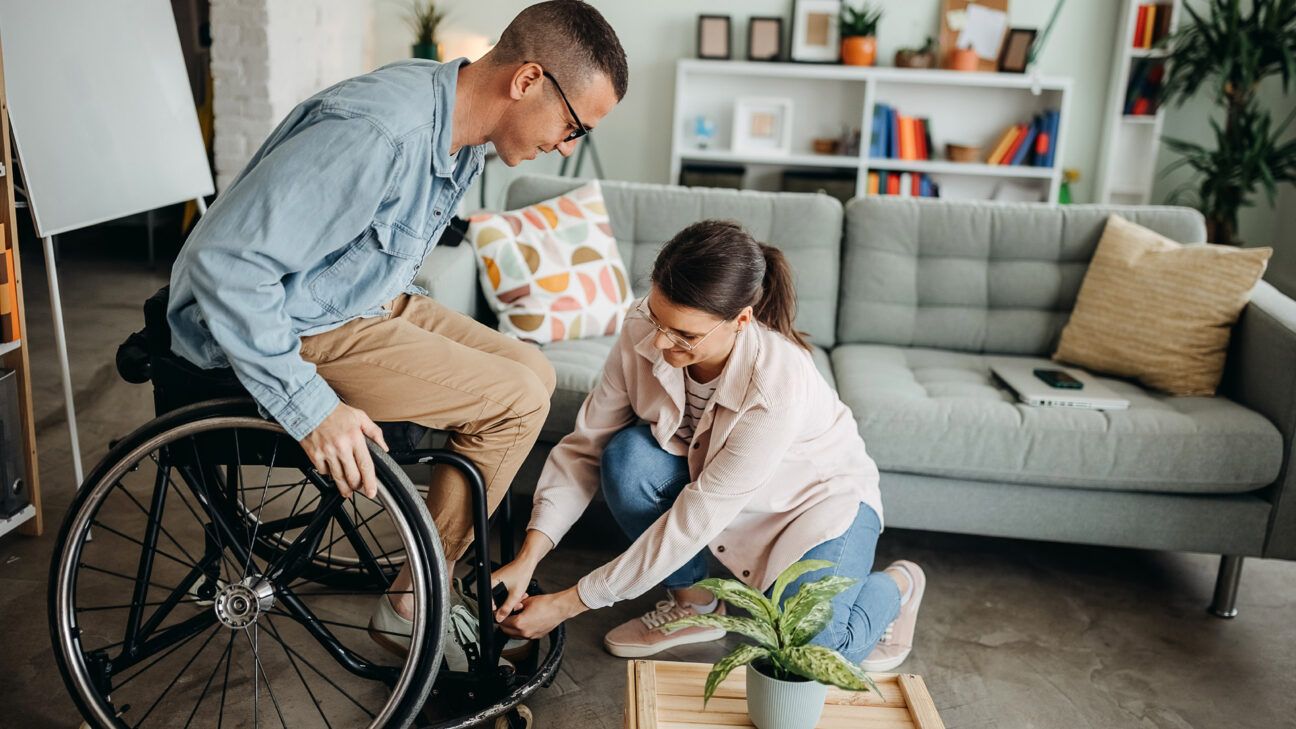Amyotrophic lateral sclerosis (ALS) is a progressive neurological disease that affects voluntary muscle movement. It is not contagious, but various factors may put certain people at risk.

When a health condition is contagious, it means that one person can actively pass it to another through direct or indirect contact.
Amyotrophic lateral sclerosis (ALS) is not contagious. ALS is a disease that originates inside a person’s body and is not “caught” from contact with a person or surface.
The only way you can acquire ALS directly from another person is genetically. This means that if your parents have the genes for ALS, you may inherit them and may be more likely to develop the disease — but even this isn’t so simple.
Researchers do not know exactly what causes ALS.
- Genetics: Having a family history of ALS, including defects in the
SOD1 orC9ORF72 genes, has been associated with increased risk. - Environment: Exposure to heavy metals, solvents, radiation, or agricultural chemicals may increase your risk.
- Injury: A head injury and concussion, especially severe injuries like traumatic brain injury or repeated injuries, could increase risk.
- Smoking: Smoking tobacco products
may increase your chances of developing ALS and increase its progression.
A family history of ALS only slightly increases someone’s risk of developing the disease. About
Other risk factors include:
- Environment: Exposure to work or environmental toxins may increase someone’s risk. For example, veterans are
1.5–2 times more likely to develop ALS due to exposure to lead and other materials at work. - Race and ethnicity: Caucasians and non-Hispanics have a
higher risk, though any race or ethnicity can develop ALS. - Sex: Males have a 20% higher risk while females’ risk
increases with age. - Age: ALS onset is typically between ages
55 and 75 .
There is currently no cure for ALS because damage to motor neurons cannot be reversed once it has already happened.
ALS treatment is aimed at addressing symptoms, slowing the progress of the disease, and improving quality of life.
Treatments may include medications to slow disease progression or manage symptoms, as well as lifestyle modifications to help with mobility, eating, and breathing.
Treatments may also involve a number of healthcare professionals, including:
How many people have ALS?
Experts
What are the early signs of ALS?
Early signs of ALS may include:
- muscle cramping
- twitching
- stiffness
- difficulty with writing, chewing, walking, or speech
Does ALS affect all parts of the body?
No. People with ALS do not typically have difficulty with their sense of touch, sight, hearing, taste, or smell. The muscles in the eyes and bladder are also not typically affected.
You cannot “catch” ALS from someone who has it. A family history of ALS
If you have symptoms that concern you, make an appointment with a doctor. Diagnosis includes tests like:
Early diagnosis can help you manage the disease and possibly slow its progression with medication and therapies.
